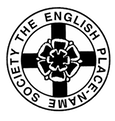Wych House Bank
Early-attested site in the Parish of Nantwich
Historical Forms
- le Brynseth 1473 AddCh
- the Brine-seth 1621 Orm2 1656
- a wich house in Baywardesholt 1454 Comb
- a wychhouse called Baywardesholt 1470 ib
- a wych in Baywardesholt 1499 ib
- a half wychhouse of six leads…adjoining the high road which is called Bayartesholt 1468 ib
- fossa oppidi de Wico c.1200 Facs
Etymology
Wych House Bank, [witʃ], 'hill where a "wich-house" stood', v. wych(e)-hous(e), banke , cf. Wich (e ) House Street (e ) (Middlewich, Northwich) 2193, 242. The description 'wich-house', meaning 'a building in a wīc' is used here, as at Northwich and Middlewich, for a salt-boiling factory in a manufacturing town, cf. Wychehous 1356CampbCh , tres tenementa salina vocata Wychehowses 1527ChCert , domus vocata Wychehouse 1541 Dugd, and 'a cite , wich-house place , peice of ground or walling land commonly called or known by the name of an eighteene leads walling ground , with the wood -Roome thereunto belonging '1692AddCh 43831 (between Great Wood St. & Little Wood St., i.e. First Wood St. and Second Wood St. supra , where the 'wood- rooms' (v. rūm 1 ) were, and cf. Walling Mdw infra ). Brine from a central brine-pit (le Brynseth 1473AddCh , the Brine-seth 1621 (1656) Orm2, v. brīne , sēað ), later known as the old Biat (1774 Orm2 iii437, an account of well-dressing, v. biʒeate , cf. Byatts Ho 325infra ) was conduited to wich-houses and to open-air 'walling grounds' where stood the 'leads' (leaden 'walling'-pans, cf. dial. wall 'to boil (salt), to seethe'), cf. le leede ground , le leade ground 1548 Pat, from OE lēad 'lead'.The other salt-wiches also had lead-smithies for the repairing of these pans, v. le Leadsmythye , Lead Smithy Street 2 193,241. DB mentions eight salt-pans in Nantwich, TRE, shared between the king and earl Edwin, and several others owned by men of the county. The abbeys of Chester and Combermere had salt-works here a. 1093 and c.1130.Very few names of the eventually numerous wich-houses in Nantwich have been noted–a wich house in Baywardesholt 1454 Comb, a wychhouse called Baywardesholt 1470 ib, a wych in Baywardesholt 1499 ib, a half wychhouse of six leads …adjoining the high road which is called Bayartesholt 1468 ib (cf. Beaverhold supra ); salina quondam Johannis de Brodefeld 1382Chol ; le Courtwichehouse 1511, 1513 Plea ('salt- factory belonging to, or making salt for use at, the court', v. court , wych(e)-hous(e)); Hordernesalt 1275 Misc ('salt for the store-house', v. hord-ærn, salt ); Le Owlewychehous 1402AddCh (perhaps 'the old wich-house', from ald ); St Mary Wyche-house 1404 Sheaf, the wychhouse of St Mary 1445, 1469 Comb (belonging to the chapel of St Mary 1410, 1466 ChRR, this factory was near the bridge-end 1469 Comb (Nantwich Bridge), which puts it near Wych House Bank). A salina de Schavinton is mentioned 1276 Ipm ii122, No. 196, but whether this was in Nantwich or at Shavington 69infra is not clear. It may have been in Nantwich and belonged to Shavington manor, an arrangement found in the other salt-wiches, cf. 2193–4, 242–3. In DB the wīc at Nantwich was an enclave included between R. Weaver and a ditch (fossa oppidi de Wico c.1200 Facs 5 (2)). It is possible that this enclave was originally part of one of the adjacent townships, and that its economic importance gave it independence, as Northwich from Witton, or Middlewich from Newton, v. 2193, 243–4.

Places in the same Parish
Early-attested site
- Beam Heath
- Beam Bridge
- Snow Hill
- Wall Fields Fm
- The Barony, Barony Rd
- Baddiley Grange
- Beam Heath
- Mayowse
- Lothburne
- Marshfield, Marshfield Bank & Marshfield Bridge
Other OS name
- Alvaston Hall
- Whitehouse Lane
- Brookfield Ho
- Cheney Hall
- Elm Ho
- Vauxhall, Vauxhall Ho
- Ashfields
- Colleys Lane
- Wood Fm
- Colleys Bridge
- Clan Ho
- Farfield Ho
- Marsh Lane
- Nantwich Bridge
- Nantwich Mill
- New Town
- Parkfield Ho
- Shrewbridge Hall Fm, Shrewbridge Rd
- Townend Ho(lost)
- Cartwright's Row
- Pym's Lane
- Beambridge
- Windy Arbour Fm
- Daisy Bank
- Heath Cottage(lost)
- Wilbrahams Almshouses
- Birchen Lane
- Lodgefield
- Marshfield Bridge
- Barrows Green
- Dodd's Lane
- Flowers Lane
- The Grange
- Leighton Brook
- Mablins Lane
- Manor Ho
- Mile Ho
- Moss Fm & Moss Lane
- Red Hall
- Totty's Hall
- Dovehouse Croft
- Hillfield
- Woodside
- Brassey Hall
- Crewe Rd
- Dairy House Fm
- Millstone Lane
- White House, White House Lane
- Willow Fm
- Brassey Bank Bridge
- Buckley Mill Cottage
- Coppenhall Lane
- Field Fm
- Woodlands
